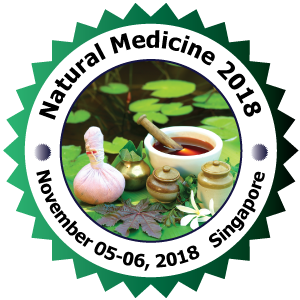
Paul D Toukam
Institute of Medical Research and Medicinal Plants Studies (IMPM), Cameroon
Title: Novel saponin and benzofuran isoflavonoid with in vitro anti-inflammatory and free radical scavenging activities from the stem bark of Pterocarpus erinaceus (Poir)
Biography
Biography: Paul D Toukam
Abstract
Inflammation is a complex process, which is frequently associated with pain and involves occurrences such as: the increase of vascular permeability, increase of protein denaturation and membrane alteration. Inflammation is a leading cause and symptom of much other pathology. According to WHO, osteoarthritic (inflammation of joints and bones) is the cause of 10500 death per year. The management of inflammatory conditions is a real community problem. NSAD are most often used with their adverse side effects. However, alternative treatments are well known by population of developing countries. For example, the stem barks of Pterocarpus erinaceus are used in the form of decoction to treat inflammatory disorders. It is therefore important to promote the discovery and development of new lead compounds. The phytochemical study of the stem bark of Pterocarpus erinaceus led to the isolation of two new compounds a saponin (1) and a benzofuran isoflavonoid (2) along with seven known compounds, friedelin (3), triacontanoic acid (4), dotriacontanoic acid (5), 2,3-dihydroxypropyl hexacosanoate (6), octacosanoic acid (7), calycosin (8), stigmasterol glucoside (9). On the basis of IR, UV, 1D and 2D NMR analysis in conjunction with EIMS, HRMS and literature review, the structure of the new compounds were characterized. The free radical scavenging activity and serum bovine albumin denaturation activity of the isolated compounds were evaluated. Compound 2 (SC50, 12.63±0.86 μg/mL) and compound 8 (SC50, 42.53±1.77 μg/mL) showed antioxidant property although lesser than that of the reference drug ascorbic acid (SC50, 5.99±0.59 μg/mL). Compound 3 (IC50, 14.87±1.51 μg/mL) was the most active against the denaturation of the protein followed by 1 (IC50, 28.60±4.10 μg/mL) and 9 (IC50, 35.94±2.10 μg/mL). Diclofenac of sodium (IC50, 7.20±0.97 μg/mL) was used as reference drug

